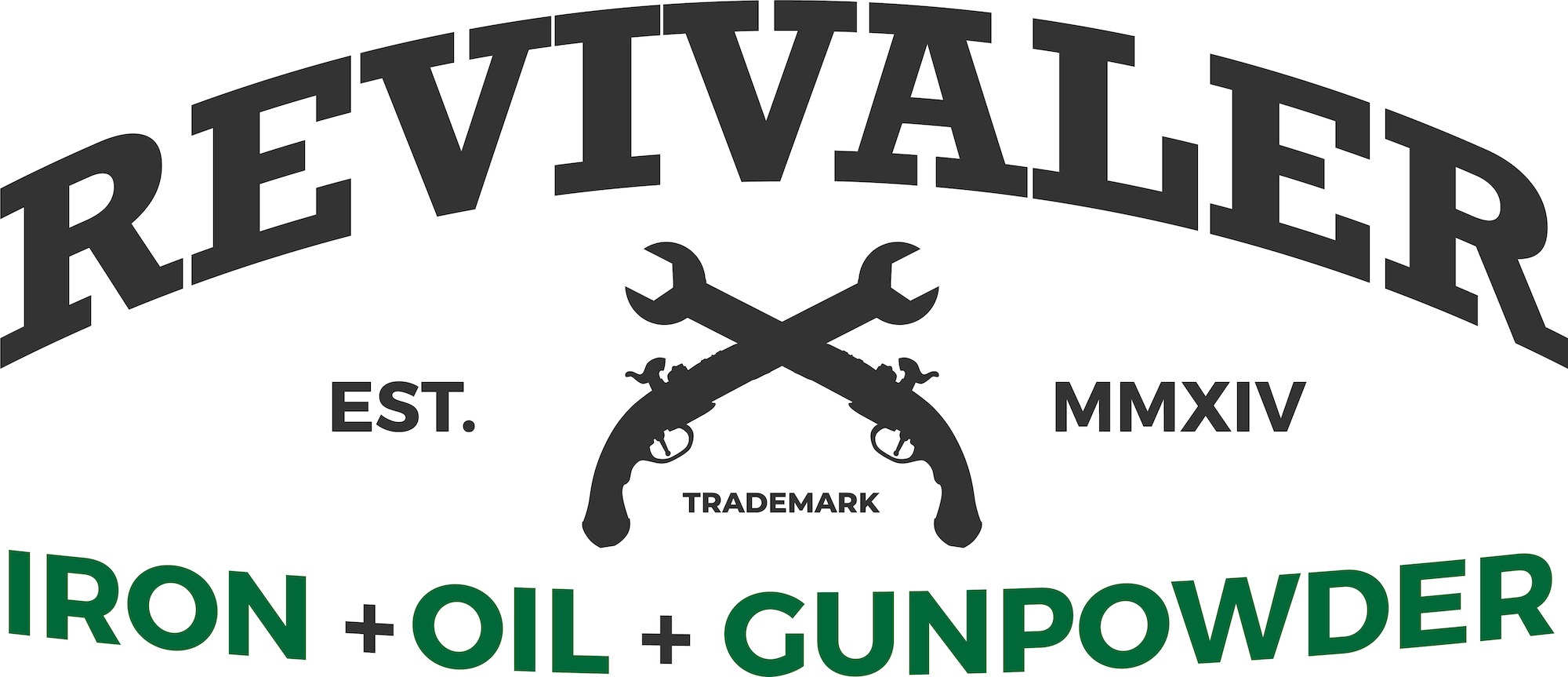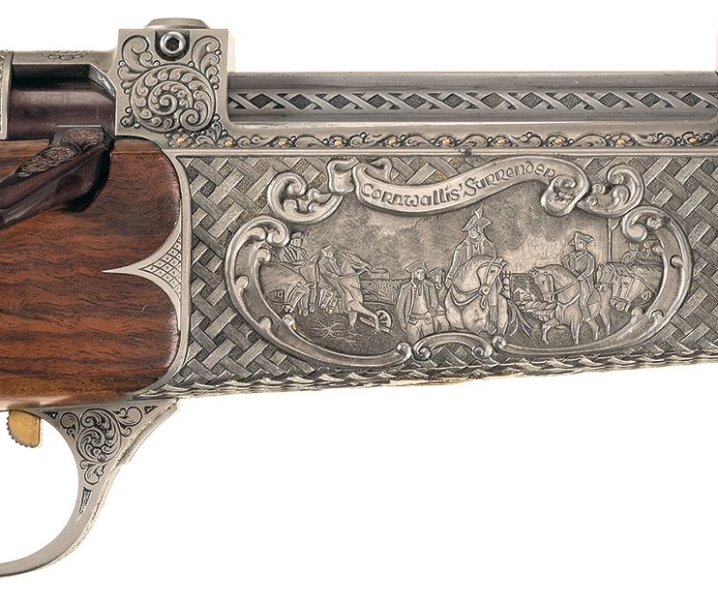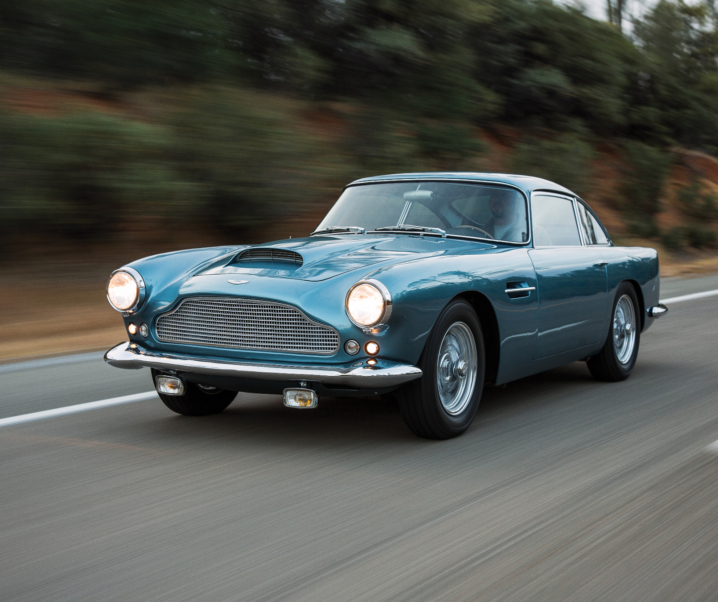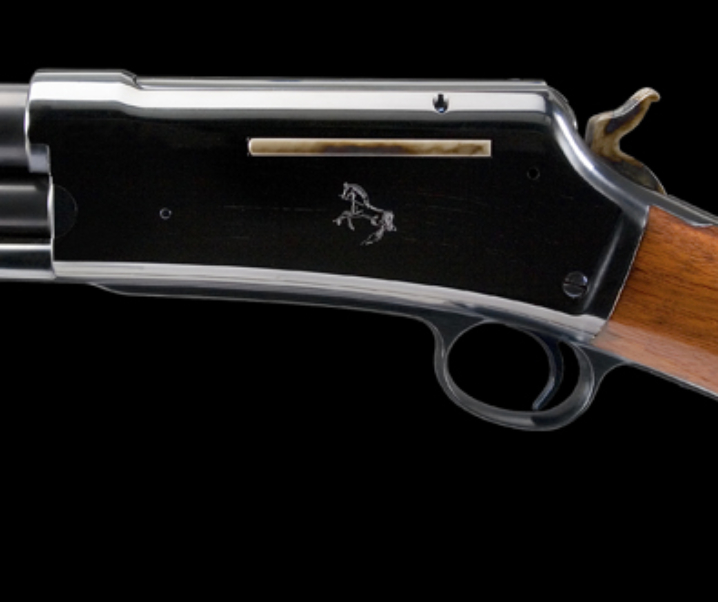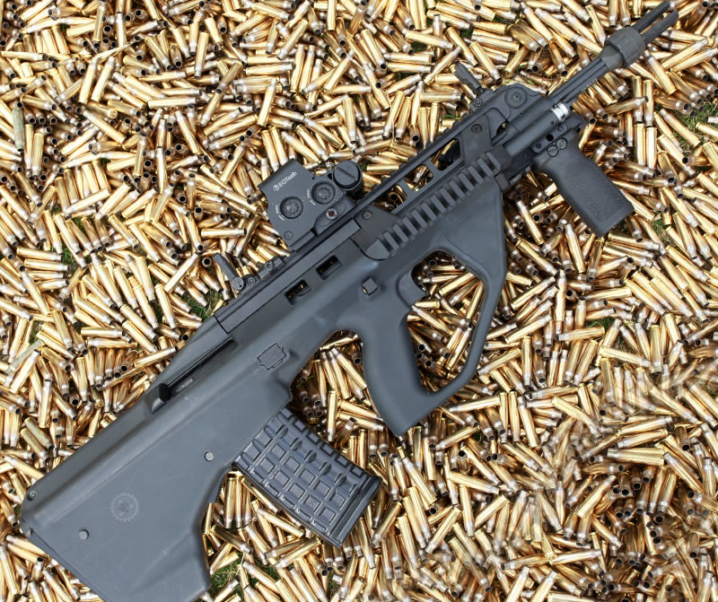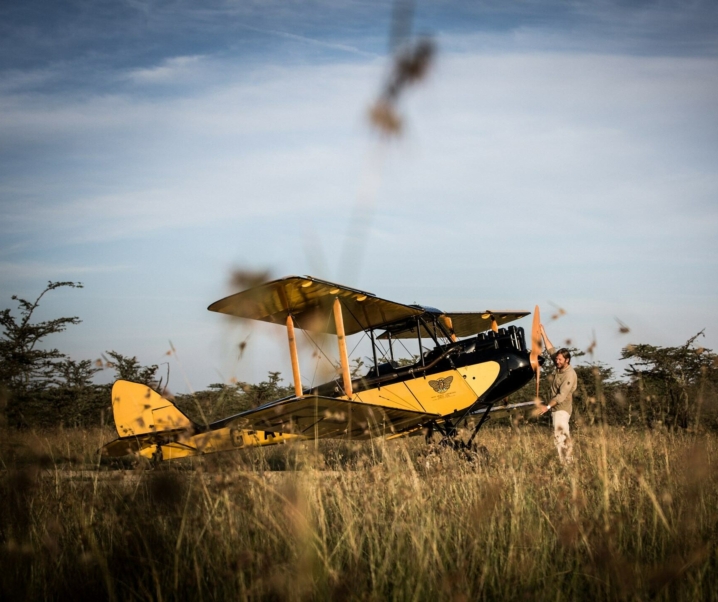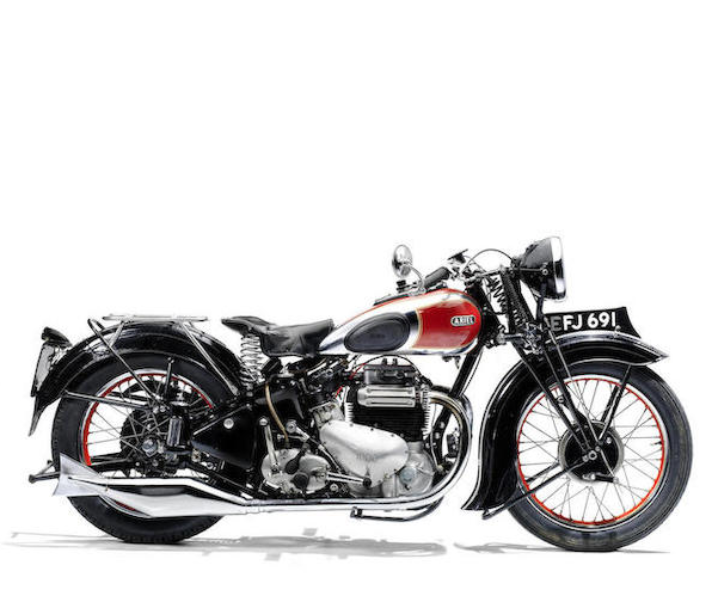The BRNO ZP series of side-by-side shotguns are among the most underrated guns the world has seen. True sidelocks with forged chopper lump barrels with a third bite in the concealed Purdey style these guns were brilliantly designed, well made, and graceful both to look at and to shoot.
Fast Facts
- The BRNO ZP series of side-by-side shotguns were true back-action sidelock guns.
- ZP series barrels were forged chopper lump with a third bite in the concealed Purdey style.
- These guns were made in a variety of grades in 16 gauge and 12 gauge.
- Production began in the post-war years around 1950 and ended in 1998.
I have a bit of a soft spot for BRNO firearms. My first rifle was a BRNO Mod.2 22lr rimfire, and BRNO rifles in 243 Winchester were almost ubiquitous in the Australian goldfields where I was living at that time.
In addition to that, during the Second World War, my mother worked at the Royal Small Arms Factory Enfield Lock making Bren guns. BREN stood for BRNO Enfield.
Many years after that time when I was living in another place, I was offered, and bought, a BRNO ZP49 side by side 12 gauge shotgun: it was to become a trusted companion on many duck season opening day expeditions as well as being my rabbit gun.
It took me a while after I’d bought the ZP49 to fully appreciate the quality of this little gem that I’d bought – initially as a budget gun for field shooting. The BRNO was a gun with absolutely no “gun-snob” value whatsoever – yet it offered not only surprisingly high quality in manufacture, but it was a true back-action sidelock ejector.
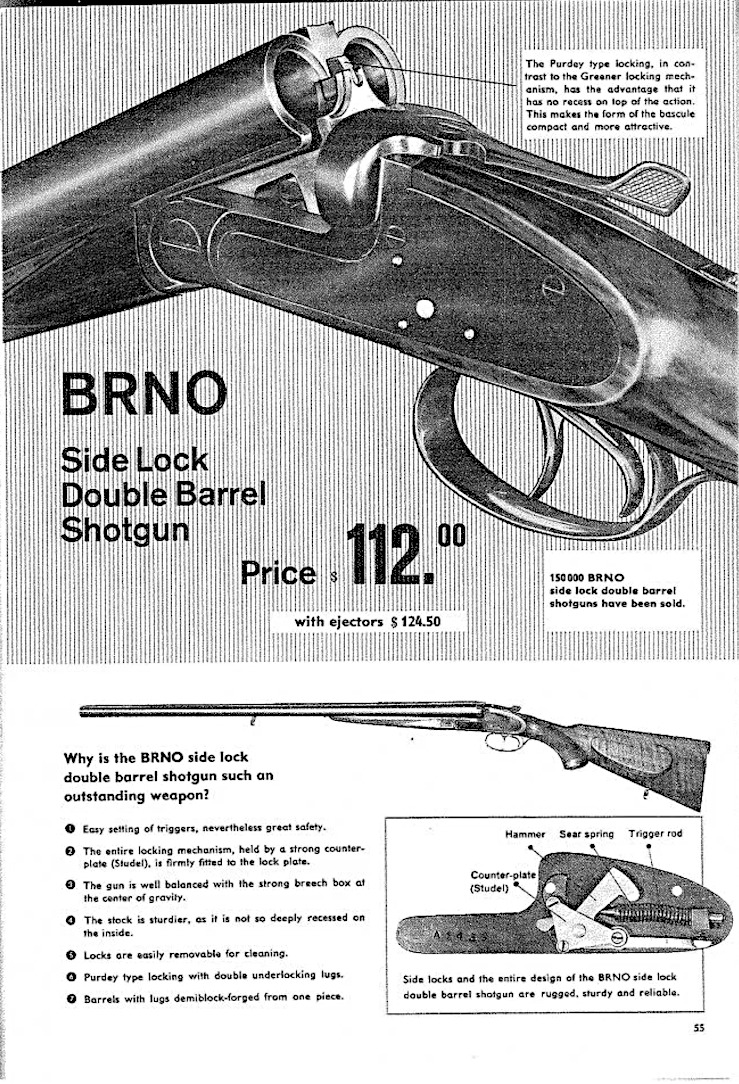
Let’s first look at the technical features of the design and manufacture of the ZP series.
The ZP series barrels were forged chopper lump with a third bite in the concealed Purdey style. The two under-lugs were made about 40% thicker than on a comparable English gun. The strength of this design has proved to be sufficient to enable gun-makers to create decent double rifles in such calibers as the 450 #2 Nitro Express based on this action.
The sidelocks were a design made to be more easily machine manufactured than the older style sidelock action. The ZP series sidelocks used coil springs and did not feature intercepting sears on the lower grade guns, but these were fitted on higher grade guns.
The sidelocks were easily removed which was a nice feature – after a weekend on the duck-swamp I would remove the locks of my gun and give them a decent scrubbing using an old toothbrush before light re-oiling and re-assembly.
The tang mounted safety catch was automatic and on the more expensive versions cocking indicators were fitted.
The guns could be had with either simple extractors or with selective ejectors.
The ejectors were of the Southgate type using a single spring and fitted into an Anson & Deeley style fore-end, with a push-button at the front of the fore-end to release it and allow its removal.
Most versions of the ZP were fitted with double triggers with one higher grade model equipped with a single selective trigger.
My gun had double triggers: trigger pull was fairly heavy but crisp and predictable for both front and rear – ideal for a field gun.
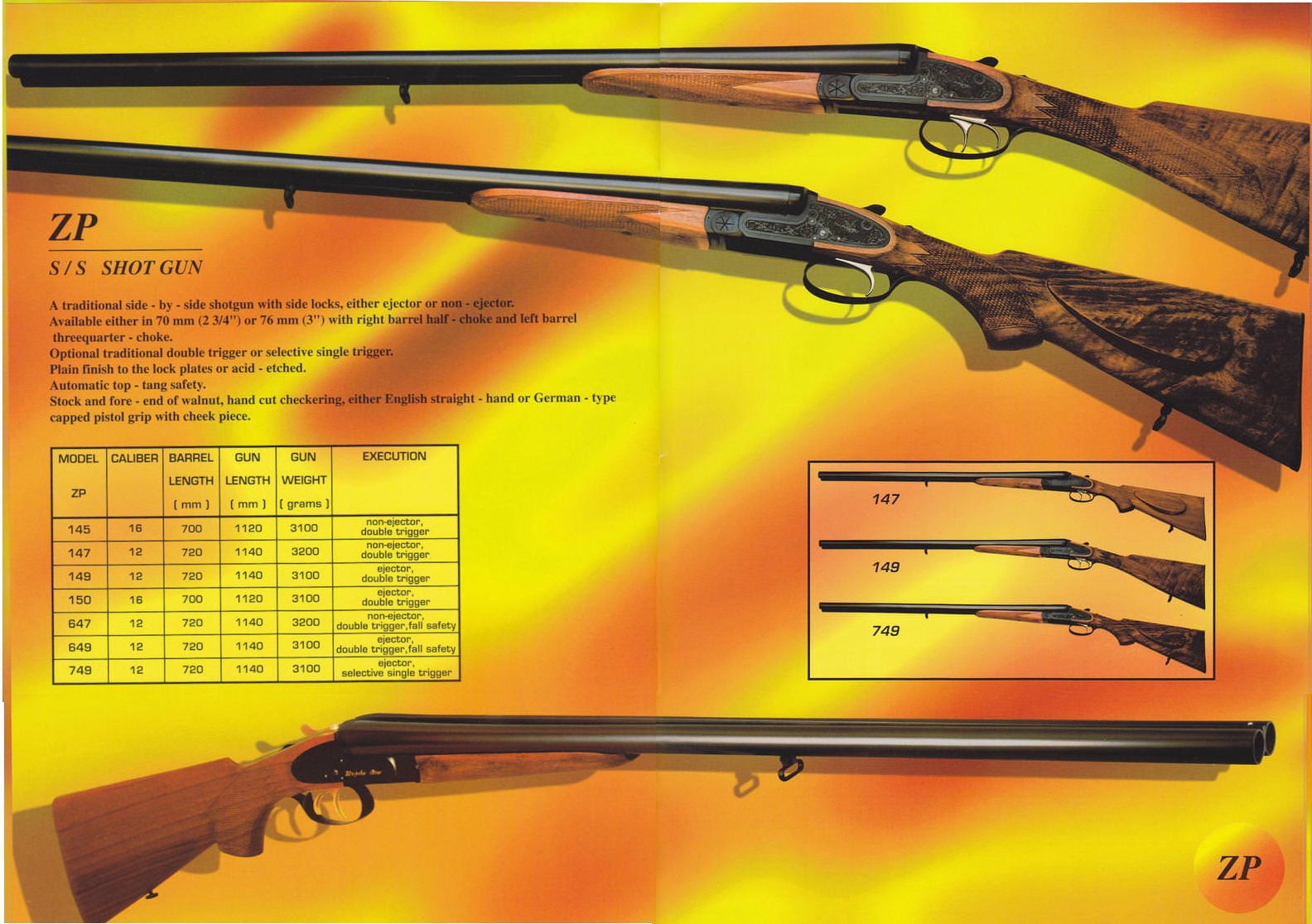
The barrels were made of “Poldi” electro steel (i.e. electric arc furnace steel) and were silver brazed, with a solid concave rib and a single front bead. Various models were offered with differing barrel lengths and chokes, my gun had 720mm (28.35 inch) barrels choked full and modified.
The ZP guns were offered in either 16 gauge or 12 gauge with 70mm (2¾ inch) chambers.
The stocks of the ZP series varied from market to market. For Europe and British markets including Australia the fore-end was of the splinter type while for the US beavertail style was also offered.
US market guns with the beavertail fore-end sometimes came with a white-line spacer at the butt-plate.
The butt was made in both English straight-hand style and pistol-grip style. Some guns had a cheek-piece some not. The cheek-piece where provided was of the continental “pancake” style.
The butt-stock was given some cast-off – my own gun having the cheek-piece certainly did.
Length of pull was 14¼ inches.
The butt-stock was fitted with a hard plastic butt-plate. Where a pistol-grip was fitted it had a hard plastic grip-cap.
The stock checkering was hand-done and on my own lower grade gun was of decent quality.
Stock timber was walnut, with the grade becoming more fancy as the grade of the gun got higher.
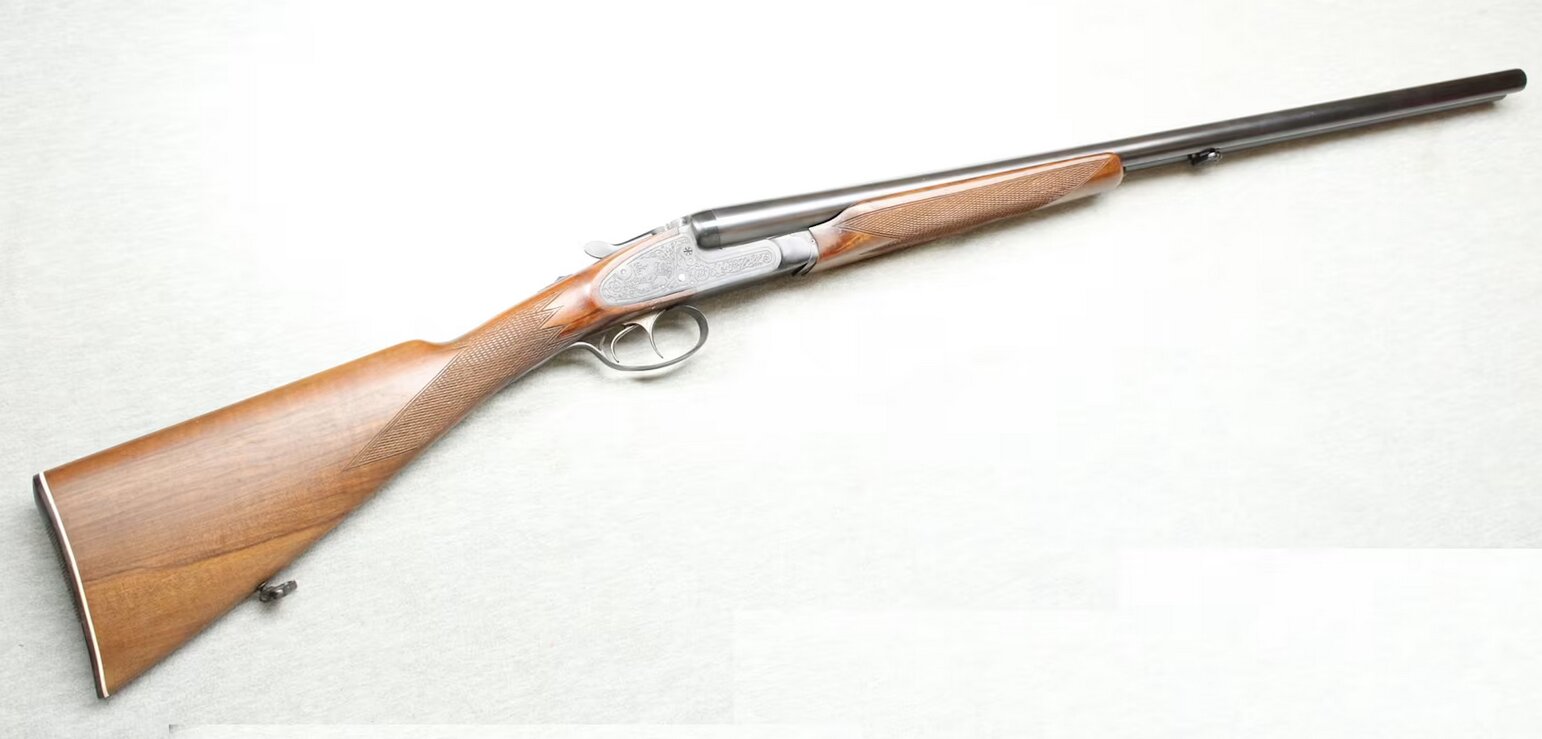
BRNO ZP guns are often encountered on the used gun market fitted with a recoil pad. These are near certain to have been after market fitted – I had my own ZP49 fitted with a Pachmayr recoil pad which made it rather more comfortable to shoot – especially important as the duck season was in summer in Australia.
As for decoration, the lower grades of ZP gun were without any engraving so the side-plates were simply polished and blued. This gave the guns a rather attractive unadorned aesthetic which I rather liked.
The higher grades were given decoration, usually in the form of acid-etched decorations of game scenes.
For me my BRNO ZP49 was my last shotgun, I had to sell it when I moved overseas, otherwise I expect I would still have it. It was a gun that I really liked and despite being a factory made “one size fits all” it fitted me well enough and handled nicely.
It was also wonderfully reliable – and boringly reliable is a good thing.
Production of the BRNO ZP guns ended in 1998.
Background
The ZP series of guns first entered production in the years between the end of the Second World War and 1950.
At that time the country was called Czechoslovakia and it was under communist rule. Nowadays it is the Czech Republic and is a democratic republic.
BRNO was a gunmaking town with a long and proud history, but it was not the only town where firearms were made. However, during the time of the communist rule all firearms made for export had to be marketed under the BRNO name.
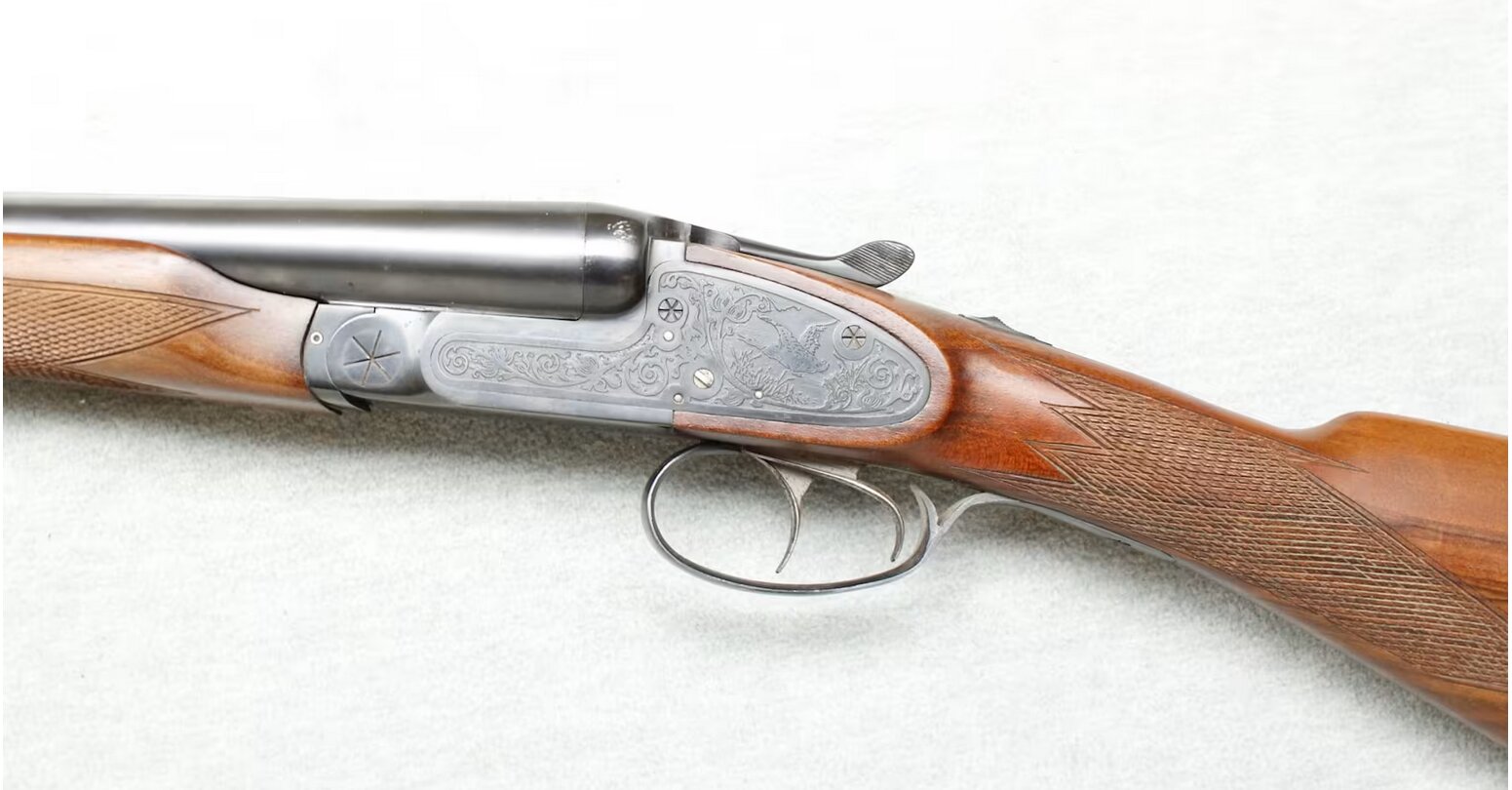
The designation “ZP” most probably stands for “Zbrojovka Praga” (i.e. Prague Arms – zbrojovka means arms, and Prague is possibly the city where these guns were made).
The early ZP series guns, made during the 1950’s, were of exceptionally high quality and featured removable striker discs. By the 1970’s some cost cutting in production is evident and the removable striker discs were no longer a feature. Nonetheless the guns remained of high quality yet were sold at quite modest prices.
There have been quite a variety of model numbers and grades. The most basic summary is as follows:-
- ZP45 – a non-ejector in 16 gauge
- ZP50 – ejector in 16 gauge
- ZP47 – a non-ejector in 12 gauge
- ZP49 – ejector in 12 gauge.
For these there were up to seven grades and the grade was identified by a number after the ZP: i.e.
- A ZP149 was a base grade ZP49.
- A ZP649 was a top grade gun with quality Turkish walnut wood, cocking indicators, and intercepting sears.
- A ZP749 was a top grade ZP49 with quality Turkish walnut wood, cocking indicators, intercepting sears, and a single selective trigger.

From about 1997 onwards in a complex series of corporate moves the BRNO name was replaced by CZ, and there was a process of changing and modernizing the product inventory. So by 1998 production of the BRNO ZP shotguns was ended. Production of these guns was in excess of 150,000 according to BRNO factory sources.
The ZP guns required significant expertise to make them and it would seem that CZ decided to have their shotguns made in Turkey rather than continuing to make them in the Czech Republic.
Personally I think this is a shame. But if you find a really good used BRNO ZP then you have the opportunity to acquire one of the most outstanding production guns you could hope for.
Will the ZP be put back into production? I doubt it: although with the advent of modern CNC machining I don’t think it would be excessively difficult. But I think it would not be likely to be able to compete with the cheaper guns that are now on the market.
Picture Credits: Feature image at the head of this post courtesy simpsonltd.org. All others as individually credited from BRNO (CZ), BassPro, and SimpsonLtd.
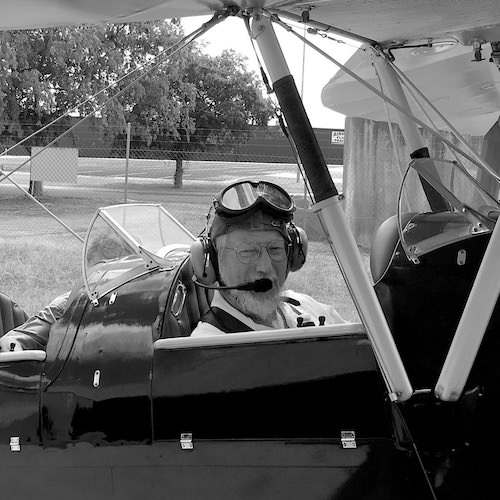
Jon Branch is the founder and senior editor of Revivaler and has written a significant number of articles for various publications including official Buying Guides for eBay, classic car articles for Hagerty, magazine articles for both the Australian Shooters Journal and the Australian Shooter, and he’s a long time contributor to Silodrome.
Jon has done radio, television, magazine and newspaper interviews on various issues, and has traveled extensively, having lived in Britain, Australia, China and Hong Kong. His travels have taken him to Indonesia, Israel, Italy, Japan and a number of other countries. He has studied the Japanese sword arts and has a long history of involvement in the shooting sports, which has included authoring submissions to government on various firearms related issues and assisting in the design and establishment of shooting ranges.
